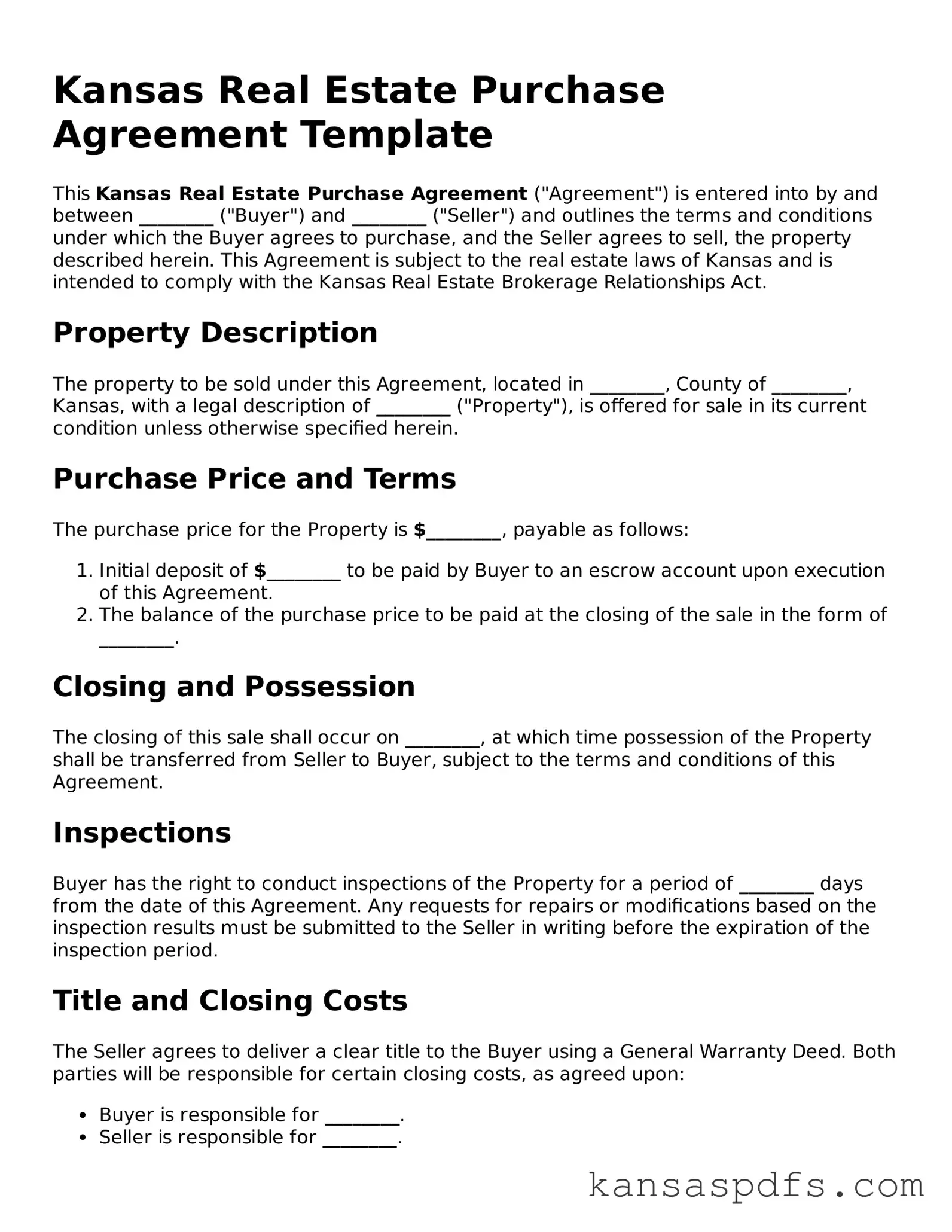Kansas Real Estate Purchase Agreement Template
This Kansas Real Estate Purchase Agreement ("Agreement") is entered into by and between ________ ("Buyer") and ________ ("Seller") and outlines the terms and conditions under which the Buyer agrees to purchase, and the Seller agrees to sell, the property described herein. This Agreement is subject to the real estate laws of Kansas and is intended to comply with the Kansas Real Estate Brokerage Relationships Act.
Property Description
The property to be sold under this Agreement, located in ________, County of ________, Kansas, with a legal description of ________ ("Property"), is offered for sale in its current condition unless otherwise specified herein.
Purchase Price and Terms
The purchase price for the Property is $________, payable as follows:
- Initial deposit of $________ to be paid by Buyer to an escrow account upon execution of this Agreement.
- The balance of the purchase price to be paid at the closing of the sale in the form of ________.
Closing and Possession
The closing of this sale shall occur on ________, at which time possession of the Property shall be transferred from Seller to Buyer, subject to the terms and conditions of this Agreement.
Inspections
Buyer has the right to conduct inspections of the Property for a period of ________ days from the date of this Agreement. Any requests for repairs or modifications based on the inspection results must be submitted to the Seller in writing before the expiration of the inspection period.
Title and Closing Costs
The Seller agrees to deliver a clear title to the Buyer using a General Warranty Deed. Both parties will be responsible for certain closing costs, as agreed upon:
- Buyer is responsible for ________.
- Seller is responsible for ________.
Default
In the event that either party fails to comply with the terms of this Agreement, the non-complying party shall be in default. The aggrieved party will then have the right to pursue any legal remedies available under Kansas law.
Signatures
This Agreement shall be considered legally binding upon signature by both parties. Signatures may be exchanged electronically, in accordance with Kansas law.
Buyer's Signature: ___________________________________ Date: ________
Seller's Signature: __________________________________ Date: ________
Please ensure that all blank spaces are completed accurately before signing. By signing this Agreement, both Buyer and Seller acknowledge that they understand and agree to all terms and conditions stated herein.
